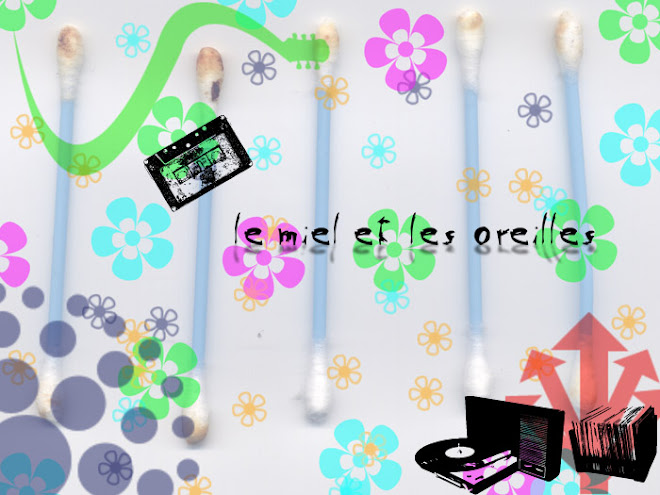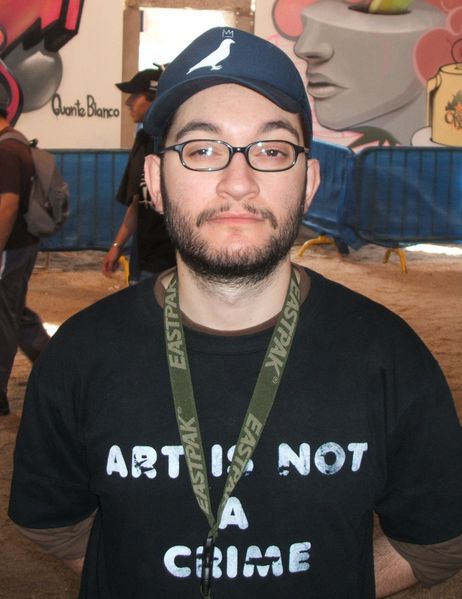 Biografia
Biografia
| « Abbiamo cominciato per hobby, per divertimento puro e semplice. Avevamo un'impronta punk, andavamo a suonare senza neanche provare, a volte eravamo in 6, a volte in 7, anche in 11. » |
| (Franco D'Aniello) |
I Modena City Ramblers (anche M.C.R.) nascono nel 1991 da un gruppo di amici intenzionati a suonare la musica irlandese, senza alcuna pretesa.
Ne fanno parte "Albertone" Morselli, Giovanni Rubbiani e "Albertino"' Cottica già dei Lontano da dove, Chris Dennis ex Nomadi, Filippo Chieli, Franchino D'Aniello e Luciano Gaetani dell'Abazia dei folli. Il 17 marzo 1991, ricorrenza di San Patrizio, in occasione di un concerto in un locale di Modena, viene deciso il nome Modena City Ramblers: un omaggio ai Dublin City Ramblers, una specie di gruppo di "liscio irlandese", senza dimenticare le radici emiliane.[2] Nel 1992 arriva il bassista Massimo Ghiacci (ex Plutonium 99). La sera del 1 marzo viene effettuata la prima registrazione del gruppo nel disco On the first day of march...Live demo. Durante un concerto al Kalinka, un locale di Carpi, sale sul palco per la prima volta a cantare The Wild Rover Stefano "Cisco" Bellotti.[3]. In questo periodo i Modena City Ramblers non sono un ensemble convenzionale ma una compagnia aperta (elemento che rimarrà in qualche modo in tutta la storia dei Ramblers, tanto che tutti i membri che hanno poi abbandonato la "formazione effettiva", eccetto Alberto Morselli, continuano a collaborare con il gruppo). Il concerto più importante è l'apertura del concerto dei Pogues a Modena, il repertorio si arricchisce, vengono accostati ai tradizionali irlandesi brani popolari italiani: Bella ciao, Fischia il vento, Contessa.
Nel 1993 i Modena City Ramblers mettono ordine in una formazione troppo caotica: "Albertone" Morselli e Cisco alla voce, Giovanni Rubbiani alla chitarra, "Albertino" Cottica alla fisarmonica, Franchino D'Aniello ai fiati, Luciano Gaetani al banjo, bouzouki, mandolino, Massimo "Ice" Ghiacci al basso, Marco Michelini (anch’egli ex dell'Abazia dei folli) al violino e Vania Buzzini al bodhran e ai cori. Registrano il demo Combat Folk sotto la produzione di Arcangelo "Kaba" Cavazzuti.
Nel 1994 pubblicano per la etichetta indipendente Helter Skelter di Roma Riportando tutto a casa. Al disco partecipano inoltre come ospiti gli ex Chris Dennis, Filippo Chieli e Vania Buzzini. Compare l’utilizzo del dialetto in alcune canzoni (I funerali di Berlinguer e The great song of indifference, cover di Bob Geldof) anche sull’onda dei torinesi Mau Mau; stilisticamente, non più solo Pogues e Waterboys ma anche Les Negresses Vertes e Mano Negra. Molto importante l’apporto dato da Albertino e Giovanni nella scrittura dei brani. Il disco è un vero e proprio manifesto della cultura musicale del gruppo, si passa dall'Irlanda magica di In un giorno di pioggia alle terribili esperienze di casa nostra di Quarant'anni senza dimenticare la spensieratezza dei testi disimpegnati (The great song of indifference) e la dolcezza di Ninnananna. Il disco viene ripubblicato dalla Mescal, e viene aggiunta il bicchiere dell’addio in cui appare Bob Geldof, che verrà distribuito gratuitamente come singolo ai concerti a chi avesse la versione precedente del disco; fa inoltre il suo ingresso il primo batterista dei M.C.R. Roberto Zeno.
In questo periodo (1994-1995) i M.C.R. partecipano ad alcuni album: I disertori, tributo ad Ivano Fossati con Gli amanti d'Irlanda; a Tributo ad Augusto (Daolio) con L'atomica cinese, a Materiale resistente con Bella ciao compilation prodotta da Giovanni Lindo Ferretti dei C.S.I. insieme a gruppi del calibro di Africa Unite, Mau Mau, Gang e Skiantos, per il 50° anniversario della Liberazione. Alla fine dell'estate Albertone lascia il gruppo per disaccordi politici e musicali con il resto del gruppo[4], Cisco rimane l’unica voce.
Nel 1996 viene alla luce il secondo disco La grande famiglia con interventi di Paolo Rossi, Mara Redeghieri degli Ustmamò, Marino e Sandro Severini dei Gang. All’inizio del tour abbandonano il gruppo Gaetani e Michelini, che non accettano di lasciare i loro lavori (rispettivamente psicologo e impiegato in banca), sostituiti rispettivamente da Massimo Giuntini e Francesco Moneti, entrambi degli aretini Casa del Vento. Prendono parte al concerto del Primo maggio a Piazza S. Giovanni, a Roma e fanno una decina di date con Paolo Rossi.
Nel 1997 incidono Terra e libertà, che risente fortemente dei viaggi compiuti da Cisco in Patagonia e da Alberto e Giovanni in Messico e a Cuba, e chiaramente ispirato all’opera di Gabriel Garcia Marquez. I M.C.R. lavorano per sei mesi in sala prove. Al concetto del disco hanno contribuito anche gli incontri con Luis Sepúlveda, Paco Taibo o Daniel Chavarria, conosciuti nel 1997 grazie ai festival di letteratura, mentre sul piano musicale il modello sono i Mano Negra. La tournée si svolge nei palazzetti e culmina a Dicembre, quando suonano a Cuba davanti a 100.000 persone.
Nel 1998 il gruppo ha bisogno di recuperare una dimensione più "intima" del live e porta il tour nei club. A ottobre al Sisten Irish Pub di Novellara viene registrato Raccolti, album acustico con quindici classici e tre inediti (Notturno Camden Lock, A gh'è chi g'a' e La fiola dal paisan). Seguono nel 1999 un breve tour nei teatri senza Giuntini ma con ospite Luciano Gaetani: dieci brani dai concerti di Rimini e La Spezia, tra cui lo strumentale Richard Dwyer's Set e L'atomica cinese, finiscono ne Il resto raccolto, CD a tiratura limitata solo per il fan club.
I Ramblers compiono un viaggio in Irlanda per lavorare al quarto album, e poi all'Esagono dove incidono Fuori campo. Lo stile Ramblers non è più solo combat folk, ma come suggeriscono loro stessi nel titolo di una canzone di quest'album è celtica patchanka: non rinnegano le radici irlandesi, ma vi aggiungono quel meticciato musicale denominato patchanka dai Mano Negra. Il giorno dell’uscita dell’album Giovanni Rubbiani annuncia l’abbandono del gruppo. L'ultimo concerto con Giovanni come membro della società Modena City Ramblers è quello del capodanno del 2000 in Piazza Grande a Modena, insieme a Goran Bregović. Giovanni Rubbiani andrà a fondare i Caravane de Ville. Nel novembre 1999 viene pubblicato Combat Folk - L’italia ai tempi dei Modena City Ramblers, un libro firmato da Paolo Ferrari e Paolo Verri in cui il gruppo racconta la propria esperienza. I M.C.R. incidono Madre Terra per A come Ambiente, una compilation del quotidiano La Stampa.
Nel maggio 2000 anche Albertino abbandona i Modena City Ramblers, per dedicarsi al progetto, già attivo da tempo, dei Fiamma Fumana. Nel tour estivo ritornano Luciano Gaetani e Massimo Giuntini e fa il suo ingresso come membro effettivo, dopo 5 album all’attivo come produttore, Kaba, come secondo batterista-percussionista. In autunno il viaggio in Sud Africa, per una collaborazione con la band etno-folk-fusion Landscape Prayers (Lontano e Un mondo che balla). Massimo Ghiacci e Franco D'Aniello producono Pazienza santa dei Paulem di cui fa parte anche l'ex rambler Luciano Gaetani.
Nel febbraio 2001 Cisco incide con gli amici Casa del Vento il disco 900. Nella primavera del 2001 nasce il progetto Gang City Ramblers che congiunge due generazioni di combat-(folk)-rockers i Modena City Ramblers con i Gang dei fratelli Severini, sullo stesso palco a interpretare brani delle due formazioni.
Il 25 aprile dello stesso anno i due gruppi si esibiscono in un indimenticabile concerto a Macerata in una Piazza Mazzini stracolma di oltre 6.000 persone arrivate da tutti gli angoli della Regione.
I M.C.R. si chiudono poi in studio a Napoli prodotti da Enzo Soulfingers Rizzo per l’album Radio Rebelde, il primo non prodotto da Kaba, che verrà pubblicato nel febbraio 2002. Il disco risente dei fatti del G8 di Genova e dell'11 settembre. Dopo il ritiro di Massimo Giuntini, si aggiunge Luca “Gabibbo“ Giacometti, ex Mocogno Rovers e membro dei Cormac. Durante il tour invernale è ospite anche Giovanni Rubbiani.
Nel gennaio 2003 suonano in Chiapas e Guatemala, c'è infine l'innesto del fisarmonicista Daniele Contardo (già Abesibè e Tupamaros).
Nel 2004 pubblicano l'EP Gocce, legato al progetto della Coop Acqua per la pace, che contiene l’inedito Al Fiòmm, presente anche nel successivo album in una diversa produzione. Sotto la guida di Max Casacci dei Subsonica i Ramblers incidono ¡Viva la vida, muera la muerte!. Sempre nel 2004 viene pubblicato un DVD, Clan banlieue - Grande famiglia in movimento, con interviste, filmati storici dal vivo e non, e tutti i videoclip.
Nel 2005, come ideale continuazione di Materiale resistente, i M.C.R. chiamano a raccolta gli amici e registrano un album di canti sulla Resistenza: Appunti partigiani, in cui rileggono brani propri, tradizionali e di altri gruppi in chiave Ramblers. L’album esce in aprile, nel 60° anniversario della Liberazione. La canzone Ebano vince il premio Amnesty – Voci per la libertà, assegnato da Amnesty International.
Dopo 14 anni Stefano "Cisco" Bellotti lascia il gruppo, ma i Ramblers non si perdono d’animo, non fanno provini ma chiamano a dividere la pesante eredità di Cisco due amici: il sassuolese Davide "Dudu" Morandi (ex Mocogno Rovers) già presente nei cori di Riportando tutto a casa e nella foto di copertina di La grande famiglia, che aveva già cantato dal vivo con i Ramblers agli esordi [5], e la correggese Betty Vezzani, che ha cantato con i Cormac e nel progetto folk Beyond the wire con Luca Giacometti , oltre allo spettacolo Le Ceneri di Gramsci di Pier Paolo Pasolini, musicato da Giovanna Marini. Per testare la nuova formazione i M.C.R. fanno una breve tournée nei club che vede il battesimo al Fuori Orario di Taneto di Gattatico (RE) il 3 marzo 2006.
Il 3 novembre 2006 esce l'album Dopo il lungo inverno sotto la produzione di Peter Walsh, che vede ospiti Terry Woods (componente dei The Pogues, già membro degli Sweeney's Men e Steeleye Span), la brass band macedone Original Kocani Orkestar, Massimiliano Fabianelli, fisarmonicista con i Ramblers in tour l'anno precedente, il quartetto d’archi reggiano Koiné di cui fa parte Filippo Chieli, la cantante Lucia Tarì e l'armonicista Enzo Ciliberti.
Nel febbraio 2007 i Ramblers tornano in studio insieme a Terry Woods, presso il Bunker di Rubiera, per incidere il loro primo disco destinato al mercato straniero (cui era stato dato il titolo provvisorio: Tunes from the Bunker): conterrà alcune canzoni dei Ramblers, vecchie e nuove, tra cui Bella ciao, tradotte in inglese e spagnolo, cantate da Betty Vezzani e Davide Morandi. Ospite ancora Massimiliano Fabianelli, Franco D'Aniello suona per la prima volta il sassofono.[6]
Nel marzo 2007 viene pubblicato Tre colori, il nuovo album del cantautore rock Graziano Romani, che vede i Ramblers ospiti, sia come singoli che nella formazione completa, nei brani Corre buon sangue, Stesso viaggio stessa città, Spiriti liberi.
Il 6 ottobre 2007 muore in un incidente stradale Luca "Gabibbo" Giacometti. Il 13 ottobre 2007 a Castelnuovo Rangone (MO), per commemorare la scomparsa di Luca Giacometti, Davide Morandi, Franco D'Aniello e Massimo Ghiacci partecipano come ospiti ad un concerto dell'ex cantante Stefano "Cisco" Bellotti. Davide e Cisco duettano di nuovo sullo stesso palco.[7]
Il 25 gennaio 2008 è uscito in Italia distribuito da Mescal e in Olanda, Svizzera, Francia, Lussemburgo, Austria e Germania, distribuito da Universal il primo disco dei MCR destinato al mercato straniero, dal titolo Bella ciao - Italian Combat Folk for the Masses e prodotto da Terry Woods, contenente brani dei MCR riarrangiati, reincisi, in alcuni casi tradotti in inglese, più un inedito: il tradizionale americano di evidente origine irlandese Roisin the Bow. In primavera intraprenderanno un tour che li porterà in numerose capitali europee.
TRACKLIST: click to enlarge
 here
herePass:
cerumen
 Dossier informativo de Liquidator Records:
Dossier informativo de Liquidator Records: here
here























